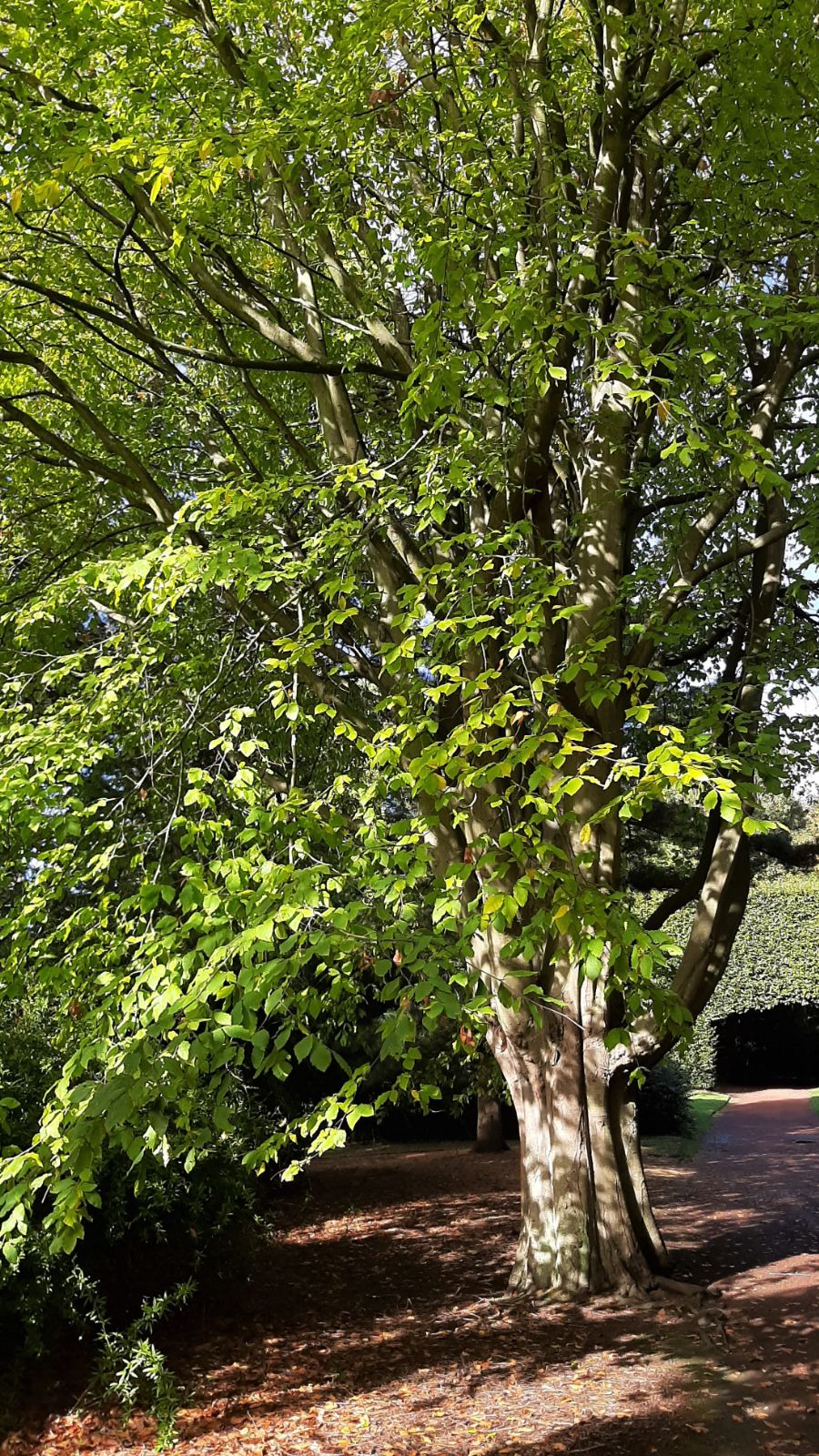Fagus × taurica
Sponsor
Kindly sponsored by
a member of the International Dendrology Society
Credits
Tom Christian (2019)
Recommended citation
Christian, T. (2019), 'Fagus × taurica' from the website Trees and Shrubs Online (treesandshrubsonline.
Genus
Common Names
- Hybrid Beech
Synonyms
- Fagus sylvatica var. moesiaca K.Malý
- Fagus × moesiaca (K.Malý) Czeczott
- Fagus sylvatica subsp. moesiaca (K.Malý) Szafer
- Fagus × moesiaca f. leucodermis Korac
A naturally ocurring hybrid between F. orientalis and F. sylvatica, intermediate between its parents and occurring where the two species meet in the eastern Balkan peninsula and in the Crimea. Cultivated trees seem to be closer to their F. orientalis parent in foliage, but closer to F. sylvatica in their fruits, which generally lack the spathulate bristles in the lower half of the cups that are so consistent in F. orientalis.
Distribution Bulgaria Greece Turkey Possibly in Kirklareli Province? Ukraine
USDA Hardiness Zone 4-5
RHS Hardiness Rating H7
Conservation status Not evaluated (NE)
Hybridisation between Oriental and European Beeches has long been known to occur where the two species converge, although it is especially common in the eastern Balkans (Kandemir & Kaya 2009) and several names have been applied to hybrid forms including F. × taurica, and various permutations of F. × moesiaca (see synonymy). All alternative names were synonomised by Govaerts & Frodin (1998) under F. × taurica and it it this name that should now be applied to hybrids between the two species regardless of where they occur.
Forms of F. × taurica are in cultivation but are frequently misidentified as belonging to one species or another. One example in the Royal Botanic Garden Edinburgh has for many years been labelled F. grandifolia! (accession 19570262*A; Pers. Obs. 2008–2021). Some authors (for example Krüssmann 1985) have speculated that certain cultivated forms of F. sylvatica such as ‘Latifolia’ and ‘Zlatia’ actually belong here. The Tree Register holds records on a number of individuals growing in the United Kingdom against which are comments such as: (of a 17 m tall tree at Exbury) ‘almost exaggeratedly F. orientalis in foliage but with F. sylvatica fruit’; (of a 23 m tree at Wakehurst Place, West Sussex) ‘F. orientalis foliage but very little flattening of the spines on the fruit-husk’; (of a 23 m tree at Petworth Park, West Sussex) ‘Long leaves; fruit as F. sylvatica. Mitchell thought it might be F. sieboldii’ (Tree Register 2019).
These and other similar comments serve to demonstrate just how challenging it can be, even to an expert, to draw a firm (and stable!) conclusion as to the identity of material of hybrid origin. It also serves to underline the importance of having known-origin, verified material to hand so that the variation may be seen in the context of the spectrum between one species and another.





